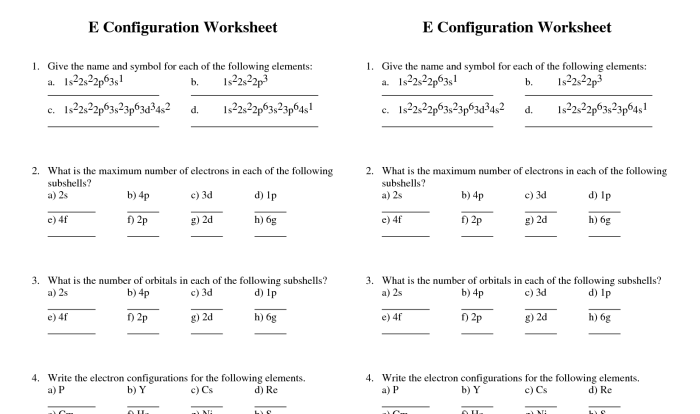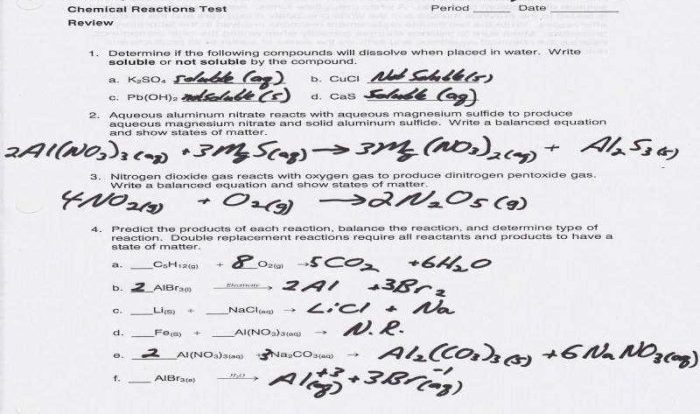Gas stoichiometry worksheet answer key – Unveiling the mysteries of gas stoichiometry, this comprehensive worksheet and answer key empowers you to conquer the intricacies of gas calculations. Delving into the heart of chemistry, we explore the fundamental principles of gas stoichiometry, unlocking the secrets of mole conversions, mass-to-mass transformations, and volume-to-volume intricacies.
Prepare to embark on a captivating journey that illuminates the practical applications of gas stoichiometry, ranging from manufacturing to medicine and beyond.
With a keen focus on clarity and understanding, our meticulously crafted worksheet presents a diverse array of problems designed to challenge your comprehension and hone your problem-solving abilities. Each problem is accompanied by a detailed, step-by-step solution, providing invaluable guidance and reinforcing your grasp of the concepts at play.
Dive into the depths of gas stoichiometry and emerge as a master of gas calculations, equipped to tackle any challenge that comes your way.
1. Gas Stoichiometry: Gas Stoichiometry Worksheet Answer Key
Gas stoichiometry adalah studi tentang hubungan kuantitatif antara reaktan dan produk dalam reaksi kimia yang melibatkan gas. Ini memainkan peran penting dalam kimia karena memungkinkan kita memprediksi hasil reaksi dan mengoptimalkan proses kimia.
Konsep Mol
Mol adalah satuan pengukuran yang mewakili jumlah zat tertentu. Satu mol suatu zat didefinisikan sebagai jumlah zat yang mengandung 6,022 × 10 23entitas dasar (atom, molekul, atau ion). Konsep mol sangat penting dalam gas stoichiometry karena memungkinkan kita mengonversi antara jumlah zat dan volume gas.
Hukum Gas Ideal, Gas stoichiometry worksheet answer key
Hukum gas ideal adalah persamaan yang menggambarkan hubungan antara tekanan, volume, suhu, dan jumlah mol gas. Persamaan ini menyatakan bahwa:
PV = nRT
di mana P adalah tekanan, V adalah volume, n adalah jumlah mol, R adalah konstanta gas (0,0821 L·atm/(mol·K)), dan T adalah suhu.
2. Gas Stoichiometry Worksheet
Lembar kerja ini memberikan berbagai masalah gas stoichiometry yang mencakup:
- Konversi mol
- Konversi massa-ke-massa
- Konversi volume-ke-volume
- Penyeimbangan persamaan kimia
- Penentuan reaktan pembatas
3. Answer Key for Gas Stoichiometry Worksheet
Kunci jawaban ini memberikan solusi langkah demi langkah untuk setiap masalah di lembar kerja gas stoichiometry. Solusi ini meliputi:
- Langkah-langkah perhitungan
- Penjelasan setiap langkah
- Referensi persamaan atau konsep yang relevan
4. Applications of Gas Stoichiometry
Gas stoichiometry memiliki berbagai aplikasi praktis di berbagai bidang, termasuk:
- Manufaktur: Mengoptimalkan proses produksi gas dan bahan kimia
- Ilmu lingkungan: Memantau dan mengurangi emisi gas rumah kaca
- Kedokteran: Menentukan dosis obat dan campuran gas untuk pernapasan
- Penelitian dan pengembangan: Mengembangkan teknologi baru dan memahami sifat gas
5. Advanced Concepts in Gas Stoichiometry
Konsep lanjutan dalam gas stoichiometry meliputi:
Tekanan Parsial
Tekanan parsial adalah tekanan yang akan diberikan oleh gas tertentu jika menempati volume seluruh campuran gas. Ini dapat dihitung menggunakan hukum Dalton tentang tekanan parsial:
Ptotal= P 1+ P 2+ … + P n
di mana P totaladalah tekanan total campuran gas dan P 1, P 2, …, P nadalah tekanan parsial masing-masing gas.
Campuran Gas
Campuran gas adalah campuran dua atau lebih gas yang berperilaku sebagai satu gas. Sifat campuran gas dapat dihitung menggunakan hukum gas ideal, dengan mempertimbangkan tekanan parsial masing-masing gas.
Essential Questionnaire
What is the significance of gas stoichiometry in chemistry?
Gas stoichiometry plays a pivotal role in chemistry, providing a framework for understanding the quantitative relationships between gases involved in chemical reactions. It enables us to determine the precise amounts of reactants and products involved, ensuring balanced and efficient chemical processes.
How does the ideal gas law factor into gas stoichiometry calculations?
The ideal gas law serves as a fundamental tool in gas stoichiometry calculations. By establishing the relationship between pressure, volume, temperature, and the number of moles of a gas, it allows us to manipulate these variables to determine the quantities of reactants and products involved in a given reaction.
What practical applications does gas stoichiometry have in various fields?
Gas stoichiometry finds extensive applications in diverse fields. In manufacturing, it optimizes chemical processes to enhance efficiency and minimize waste. In environmental science, it aids in pollution control and the development of sustainable energy sources. In medicine, it supports the design of drug delivery systems and the analysis of respiratory function.



